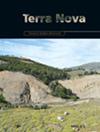Source-to-sink tandem geochronology reveals tectonic influences on the Cambrian Transcontinental Arch of Laurentia
IF 1.7
3区 地球科学
Q2 GEOSCIENCES, MULTIDISCIPLINARY
引用次数: 0
Abstract
Competing hypotheses attribute the regional loss of 1.2–1.0 Ga detrital zircon from the Cambrian Sauk Sequence in southwestern North America to differing tectonic controls on surface topography. We test three hypotheses with source-to-sink detrital zircon provenance analysis via tandem in situ and isotope dilution U–Pb geochronology paired with geochemical and Hf-isotope tracers. Our data indicate that the lower-to-middle Sixtymile Formation in Grand Canyon was derived from ca. 1.1 Ga rocks of the Llano Uplift and the ca. 539–523 Ma Wichita igneous province, approximately 1400 km away. In contrast, new U–Pb geochronology links the upper Sixtymile and Tapeats formations to the 513–510 Ma Florida Mountains intrusive complex, southern New Mexico, and proximal 1.4 and 1.7 Ga basement approximately 650 km away. We attribute a regional provenance shift to plume–lithosphere interactions on the Iapetan margin, tectonism along ‘leaky’ intracratonic transverse fault zones and the rift-to-drift transition on the Cordilleran margin.源汇串联年代学揭示了寒武纪劳伦提亚横贯大陆拱的构造影响
北美西南部寒武系索克层序中1.2 ~ 1.0 Ga碎屑锆石的区域性损失,主要归因于不同构造对地表地形的控制。通过原位和同位素稀释U-Pb年代学,结合地球化学和hf同位素示踪剂,对碎屑锆石源-汇物源进行分析,验证了三个假设。我们的数据表明,大峡谷中下60英里组来自约1.1 Ga的Llano隆起和约539-523 Ma Wichita火成岩省,大约1400 km。相比之下,新的U-Pb年代学将上60英里组和Tapeats组与新墨西哥州南部的513-510 Ma佛罗里达山脉侵入杂岩以及大约650公里外的近1.4和1.7 Ga基底联系起来。我们将区域物源转移归因于Iapetan边缘的羽流-岩石圈相互作用、沿“泄漏”克拉通内横向断裂带的构造作用以及科迪勒拉边缘的裂谷-漂移转变。
本文章由计算机程序翻译,如有差异,请以英文原文为准。
求助全文
约1分钟内获得全文
求助全文
来源期刊

Terra Nova
地学-地球科学综合
CiteScore
4.80
自引率
8.30%
发文量
59
审稿时长
2.3 months
期刊介绍:
Terra Nova publishes short, innovative and provocative papers of interest to a wide readership and covering the broadest spectrum of the Solid Earth and Planetary Sciences. Terra Nova encompasses geology, geophysics and geochemistry, and extends to the fluid envelopes (atmosphere, ocean, environment) whenever coupling with the Solid Earth is involved.
 求助内容:
求助内容: 应助结果提醒方式:
应助结果提醒方式:


